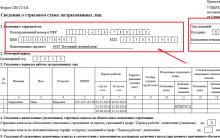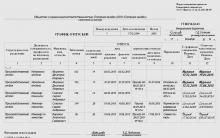Salary is a type of employee's income received by him in return for the labor service provided to the enterprise. Moreover, such accruals, as a rule, depend on the quality of the actions performed by the employee and his performance. Salary must be distinguished from salary according to the staffing table. After all, the total remuneration for work increases by various allowances and decreases after the necessary deductions are accrued. What kind of salary can be charged? Types and forms of wages are different. Let's consider them in more detail.
Basic salary
Economists identify the main types of remuneration for work. These include basic and additional salary. The first of these two types is the remuneration that is accrued to an employee for the time he actually worked. At the same time, the volume of work performed and its quality are taken into account. The basic salary also includes accruals:
- for labor participation in overtime and at night;
- for work during holidays and weekends;
- for experience and length of service;
- for work in desert, high-mountain, waterless and polar regions;
- for harmful conditions.
It represents the basic salary type of accrual for salaries and rates, as well as bonus percentages. Moreover, a person receives such remuneration only for the actual time of work.
Additional salary
The remuneration for work includes other payments stipulated by the contract between the employee and the employer. They are also classified as the main types of wages. These include the payouts:
- additional and annual leave (usually such accruals correspond to the average salary of an employee);
- preferential hours for minors;
- the time during which state and public duties are performed;
- the period during which the employee improved his qualifications with a break from work;
- for periods of downtime that occurred through the fault of the employer, equal to two-thirds of the tariff rate;
- severance pay upon dismissal of an employee due to downsizing, conscription into the armed forces, etc.
Piecework remuneration
Wages are also calculated according to the time and quantity of work. The types of wages in this division are indicated in Article 83 of the Labor Code of the Russian Federation. There is also an indication of what specific charges are made, based on the time and amount of labor expended. So, according to these criteria, 3 types of wages are determined - piecework, time and mixed. The employer applies the first of them in the case when there is a real opportunity to take into account the quantitative results of labor. At the same time, they are compared with the norms of production, time and production task. Such wages are calculated at piece rates. They are accepted for a certain amount of products produced, services rendered or work performed.
 Piece rate is a derived value, adopted after the relevant calculation. For him, a daily or hourly tariff rate is taken for the category that corresponds to the qualifications of the employee. Further, it is divided into a daily or hourly rate of production. This calculation can be done in a slightly different way. To do this, take a piece rate and multiply it by the amount of production that the person produced. It does not matter if the work was done during the day, overtime or at night.
Piece rate is a derived value, adopted after the relevant calculation. For him, a daily or hourly tariff rate is taken for the category that corresponds to the qualifications of the employee. Further, it is divided into a daily or hourly rate of production. This calculation can be done in a slightly different way. To do this, take a piece rate and multiply it by the amount of production that the person produced. It does not matter if the work was done during the day, overtime or at night.
To determine piece rates, tariff rates or salaries for the work performed are taken into account. The wage category assigned to the employee is not included in the calculations.
Varieties of piecework wages
In practice, various forms of payment for labor duties are used, depending on the amount of production and the time spent. This is confirmed by the Labor Code. It reflects all types of wages related to the category of piecework. This list includes such remuneration for work as:
- Direct piecework. This form of salary directly depends on the number of units of the product that was released by the employee. In addition, fixed piece rates are applied in the calculation.
- Piece-progressive. Accruals for this type of wages provide for an increase in remuneration for excess production.
- Piece-premium. Such remuneration takes into account the overfulfillment of standard tasks, the absence of marriage, as well as the savings in materials, etc. All these indicators provide for employee bonuses. In order to correctly make the appropriate charges, the administration of the enterprise and the trade union committee develop prices that provide for a certain level of remuneration for the manufacture of a particular type of product. They are reflected in the orders issued for the performance of work. Calculations for the piece-bonus form of payment are made by multiplying such a rate by the number of products produced. A fixed percentage of the bonus is added to the figure received, which is paid in the absence of marriage, overfulfillment of norms, etc. The amount of such material incentives depends on the decision of the administration, which must be agreed with the trade union committee.
- Chord. When calculating such a salary range, the performance of certain stages of work or their full range is taken into account. The chord form also has some variations. So, it includes remuneration for the work of those employees who are not included in the staff of the enterprise. These people, as a rule, are connected with the employer by civil law contracts.
time system
Sometimes it is not possible for an employer to evaluate the quantitative results of his employee's activities. In this case, time wages apply. At the same time, remuneration for work depends only on the time actually spent by a person, as well as his tariff rate. The amount of work performed in this case has no effect on the final result.
 The main types of wages of this type are simple time wages, as well as time-based bonuses. When applying the first of them, the calculation mechanism is quite simple. The hourly or daily tariff rate corresponding to the employee's category is multiplied by the number of days or hours marked in the time sheet. What if it's based on salary? Then its value is paid for the worked month.
The main types of wages of this type are simple time wages, as well as time-based bonuses. When applying the first of them, the calculation mechanism is quite simple. The hourly or daily tariff rate corresponding to the employee's category is multiplied by the number of days or hours marked in the time sheet. What if it's based on salary? Then its value is paid for the worked month.
If in the billing period there were breaks in the performance of official duties related to vacation, sick leave, etc., then the payment will be proportional to the hours worked.
 Somewhat different from this accrual algorithm are those made according to the time-based bonus scheme. Here, premiums are added to the amount of earnings calculated according to the tariff. They are set as a percentage of the tariff rate.
Somewhat different from this accrual algorithm are those made according to the time-based bonus scheme. Here, premiums are added to the amount of earnings calculated according to the tariff. They are set as a percentage of the tariff rate.
There are 2 more types of wages. This is a remuneration for part-time workers and accruals in case of working off not all days of the month. Let's take a closer look at these wage types.
Compensation for part-time workers
The legislation of the Russian Federation indicates the types and forms of wages that the employer uses when settling with a person who is not on the staff of the enterprise. This is the reward for partners. According to the law, such a person is the same employee of the enterprise as the main one. An employment contract is signed with him, he must adhere to the established labor schedule and comply with all regulations. In addition, the part-time worker has the rights and must fulfill the duties assigned to him. There are no differences between the main employees and part-time employees in terms of salary calculation.

That is, he is no different from those who are on the staff, except for fewer hours spent on the performance of their duties. The amount of remuneration that the part-time worker will receive for his work will depend only on this. In this case, it is worth considering what types of wages are used in this enterprise. With time-based payment, the part-time worker will be credited with material remuneration for the hours that were actually worked. They, of course, will be smaller than those of those in key positions.
If wages are calculated on a piece-rate basis, then the remuneration of a part-time worker will depend on the number of products produced by him. Ultimately, he can receive a larger amount in monetary terms than the main employee. This is not expressly provided for by law. However, according to the articles of the Labor Code, the employer can independently establish one or another form of remuneration for labor duties at his enterprise.
Nominal and real value
What else can be wages? The types of wages are also nominal and real. The first of them is the value of the funds that the worker receives for a certain contribution to the production process. Moreover, its size directly depends on the quantity and quality of labor. But the real salary is the amount of services and material goods that can be purchased for the amount of nominal remuneration. And it depends on the level of prices prevailing in the consumer market.
It is important that real wages be maintained at a certain level. To do this, the state introduces an indexation mechanism. When using it, the salary is adjusted, which allows a person to compensate for inflationary losses.
Partial month payment
Sometimes there are situations when employees were on sick leave, on vacation, etc. In this case, the salary for an incomplete month is calculated as a remuneration for their work. For the correct payments, you need to know what rate is indicated for this employee in the contract of employment. This will depend on the correctness of the calculations. So, if payment is made at an hourly rate, then the established rate is multiplied by the number of hours actually worked by a person. And if the salary and its types used at the enterprise provide for the payment of bonuses? Then it is multiplied by the norm of hours established by law and divided by their actually worked number.
In the case when wages involve the use of a daily rate, the calculation is made according to a similar algorithm. Only the multiplication is not by the number of hours. In this case, days worked are taken into account. The premium is determined in the same way.
 If the salary and its types used in the enterprise take into account the monthly rate, then the calculation of the average daily remuneration for work is necessary. It is determined by dividing the salary by the number of working days that are available in a given month. The resulting figure is to be multiplied by the days worked. The premium is calculated in the same way.
If the salary and its types used in the enterprise take into account the monthly rate, then the calculation of the average daily remuneration for work is necessary. It is determined by dividing the salary by the number of working days that are available in a given month. The resulting figure is to be multiplied by the days worked. The premium is calculated in the same way.
And if the company has a piecework form of material remuneration for employees? Then the accrued salary will depend on the billing period and the rate of output of a particular employee.
Holds
The remuneration that the employer must pay to his employee under an employment contract signed by both parties is subject to reduction on the basis of current legislation and other regulations. After various types of deductions have been made, and wages are transferred to the employee's account, we can talk about the real amount of a person's income. What payments reduce the amount of charges? For each working person, deductions to the Social Security Fund and income tax are withheld from the amount of his earnings. Mandatory payments are also those that are made on the writ of execution.
The current legislation allows the employer to make various initiative deductions. These include:
- the amount of the advance payment refund and counting errors;
- overpaid travel expenses;
- compensation for harm;
- payment for goods taken on credit;
- payment of contributions for voluntary insurance, etc.
Forms of remuneration
According to the current legislation, the employer must pay his employees a monetary reward 2 times a month. However, such an order may be inconvenient for both one and the other side.

That is why the State Duma of Russia periodically receives drafts of various forms of wages. For example, enterprises in many countries around the world use hourly wages. It is believed that this form is most capable of developing the economic potential of the state. In addition, people perform their duties with high productivity, as they really appreciate the unit of time spent by them. On the territory of the Russian Federation, such a norm has not yet been introduced, although draft decisions have been considered by state bodies since 2000.
The issue of allowing weekly wage payments has also been repeatedly discussed in our country. According to experts, if such an amendment is made to the Labor Code, the turnover of funds will increase significantly, which will improve the economic situation as a whole.











How to issue a power of attorney to represent the interests of an LLC to an individual?
How to apply for an IP: step by step instructions
Form of power of attorney to receive goods or material assets
The deadline for registering an individual entrepreneur in the tax
Business plan for a law firm: an example with calculations legal support for a business